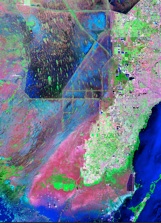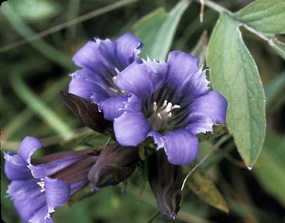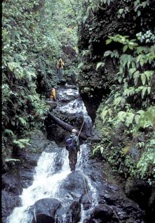Thomas J. Givnish
Henry Allan Gleason Professor of Botany and Environmental Studies
Ph.D. (1976) Princeton University • 315 Birge Hall • 608-262-5718 • givnish@wisc.edu
Plant ecology and evolution; adaptive radiation and molecular systematics;
phylogeography; physiological ecology; landscape dynamics

Conservation Biology – Don Waller, Ken Cameron, Ken Sytsma, and I, together with our post-docs Ricardo Kreibel and Daniel Spalink), and graduate students, are studying the morphological, ecological, genetic, and phylogenetic determinants of local plant loss and invasion in Wisconsin. Our aim is to understand patterns in species turnover observed over the past 50 years, and predicting future changes. Recensuses of forests, prairies, and pine barrens originally sampled by JT Curtis in the 1950’s – as well as scoring of dozens of plant traits – provide unparalleled insights into past losses and invasions and the assembly of the Wisconsin flora. We produced a molecular phylogeny including almost all native and introduced vascular plant species, providing the basis for phylogenetically structured analyses of observed changes, as well as laying the groundwork for a phylogeny of all plant species in North America and the broader ecological and comparative studies that it would facilitate. We are quantifying C values for several hundred dominant species, as a proxy for the tempo of their life history, and inferring the spatial scale of genetic differentiation and gene flow within species, as proxies for the mobility of different species and their susceptibility to inbreeding death spirals.
Spalink et al. 2018 documented an unexpected decrease in phylogenetic clustering toward higher latitudes in the Wisconsin flora, reflecting the substantial addition of gymnosperm and fern lineages in the North. This effort also included modeling of the factors limiting the distribution of almost all our native plants and projecting how species composition and phylogenetic community structure should vary across the state today and 50 years from now.
Givnish et al. 2020 recently tested 25 hypotheses regarding trait-origin, trait-trait, and trait-environment relationships involving aspects of reproduction, life history, and distribution along a sun-shade gradient in the angiosperm flora, confirming almost all of the a priori predictions.
John Volin, Paul Glaser, and I recently evaluated how spatially coupled feedbacks help create and maintain the patterned landscape characteristic of the central Everglades, involving deep-water sloughs, sawgrass ridges, and tree islands. Over the coming decade, the United States plans to spend several billion dollars to help restore the Everglades by modifying hydrological flows. However, current models for the outcome of such modifications generally ignore the fundamental importance of feedbacks in shaping peatlands. We have developed a model that incorporates spatially coupled feedbacks among vegetation, substrate, hydrology, biogeochemistry, landforms, and vertebrate predators, and asks how these feedbacks should contribute to the self-assembly of patterned landscapes under different flow regimes. We tested the resulting predictions in four different regions of the Everglades with radically different flow regimes, and uncovered a two-dimensional gradient in plant composition based on water depth and distance from tree islands; the latter involves patterns driven by feedbacks and were never previously recognized.
Photographs: TOP - Portrait of the scientist as a young man among Nymphaea; false-color satellite image of the central and southern Everglades, showing patterned landscape with streamlined tree islands and a series of water-control structures constructed over the last half-century; Gentiana puberulenta (Gentianaceae), one of the short-statured, small-seeded species that has undergone a massive decline in prairie remnants over the past several decades; and Ken Wood, Steve Perlman, and I ascending a waterfall in remote windward Kaua`i, searching for an extremely rare lobeliad.
© 2021 University of Wisconsin Department of Botany
Last updated: 27 November 2021



